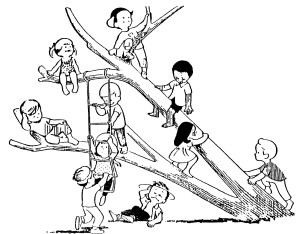What Are Retrospectives And Why Are They Essential To Every Team?
 Contributed by
Regina Soh
September 22, 2015
Contributed by
Regina Soh
September 22, 2015

At the end of every project or business cycle, it is important to stop and ask yourself some questions. What have we done right? What would we improve? What would we do different? A retrospective is a moment of reflection where each person in the team thinks about the past, learns from it, and shares his or her thoughts with the rest of the team.
Why Are Retrospectives Important?
If we just move forward without thinking about how we succeeded or what made us weak, we are not learning from our experiences. This is why the I.T. world, particularly the Agile community, started raising awareness about the importance of retrospectives and created a specific methodology for these meetings. You don’t have to be a software development company to practice retrospectives; it is useful for all kinds of teams and projects.
The Essentials To A Good Retrospective
The following are subject areas the manager needs to be working on during a daily basis in order to see an effect on his/her team and to have a successful retrospective:
- A safe environment: where people can express themselves without being afraid of the consequences. Only when team members can openly pinpoint what went wrong and know there will be no consequences, can a retrospective work.
- How do you create a safe environment? Start with yourself; be transparent and speak in an assertive, non-aggressive way.
- A proactive team: that is interested enough in the project and caring enough that they want to improve the way they perform.
- How do you achieve that? Start by not punishing or blaming people when they make mistakes. Instead, guide them and encourage them to do a better job. Always do these actions in private, while publicly celebrating when somebody does an outstanding performance.
- A creative atmosphere: where the team members can think outside the box and create new processes and different ways of getting the work done.
- How do you do this? Make sure the team’s motivation is not money. Bonuses create more activity in the team but kill creativity because monetary incentives make us look for safety and not innovation.
In our article “Your Practical Guide To Create A Positive and Motivating Work Environment“, you will find some more tips that will help you achieve these points.
When Should We Engage In Retrospectives?
Since a retrospective involves the lessons we have learned, it is usually done at the end of a project, after you deliver a product, or at the end of a cycle. In large projects, a retrospective should also be done at the end of each cycle so we can quickly learn from our mistakes and improve the way we work. Another reason to do several retrospectives in large projects is because, by the time we get done, we might have forgotten some of the things that happened along the way.
Timing is important
The best way to get feedback and to improve is to do a retrospective at the end of each cycle or delivery so we can get quick feedback and improve. It is important that the manager knows when to do retrospective thinking. These sessions can be negative for the team if they are done before finishing a cycle because they can bring chaos into the organization, and the team can become confused about how things are going to be done after the meeting. Make sure you schedule them at the end of a cycle and before people start working again.
Different Parts Of Doing Retrospective
Preparation
If you are preparing the meeting, send an invitation to the rest of the team where you explain an outline of the meeting and the questions that each person will be required to answer during the core part of the meeting. Not everybody reacts fast in meetings; some people prefer to think about their answers in advance and have them ready before the meeting starts so send the questions to all the team members in advance.

Take a break from the routine. If you can, do the retrospective outside of the office: rent a meeting room in a coffee bar or go to another floor of the building. It will help people think outside the box and come up with more disruptive ideas.
The meeting should not last longer than 1 hour and 30 minutes; remember that the mind can absorb what the seat can endure.
Whether you are meeting with your team at one site or you are having a virtual meeting, follow these steps:
Introduction
Even though everybody knows each other pretty well, start by letting people relax a little bit; it will make things go smoother during the core part of the retrospective. Now that you have finished a cycle, ask your team members which of the kids below they currently identify with. You can use this drawing or a similar one.

Each person has to explain why they identify with his/her character. This activity will help people feel more confident about expressing themselves during the core part of the meeting.
The 3 Questions
What you want to achieve is to see how each person in the team perceives the project; if you are the facilitator of the session, let each person talk and guide him/her with your questions. Some people answer with really short answers. Help them articulate their discourse by asking more questions within the main questions: ask why they think things happened, if there are patterns, etc.
Make sure somebody is writing the answers on a board that is visible to everybody. If you are meeting remotely, use a virtual whiteboard.
1. What went well?
Stop and smell the roses. Each person in the team, including the team leader, should explain, from his/her personal point of view, what went well.
2. What didn’t go well?
Retrospective and general feedback sessions are great ways to learn from our mistakes and improve from them. If the manager has worked within a safe environment, when team members answer this question, they will do it with respect for the others, knowing they won’t be punished for talking about processes, procedures, or parts of the project that didn’t go well.
Remember that a retrospective is not a moment to blame other people in the team or to find out who is guilty.
3. What could be improved? What will we do in the future to improve?
This is the main question of the retrospective because it makes the team think about what needs to be changed. The power of the question is that the improvements come from within the team, not from the CEO of the company or the manager of the project. The team is the one that knows about problems they have experienced and can propose ways of improving in the future. This is the purest way that a manager can empower a team. The leader lets the team decide how they want to fix their challenges and, because of that, the team will come out extremely motivated after the retrospective.
If you are having a hard time deciding, use a flip chart or your online whiteboard to create three separate boxes with the following titles: “Start,” “Continue,” and “Stop.” Now ask the team members to write tangible suggestions for every category. Allow the team members to think in silence for a couple of minutes; after that, each person should explain why he/she put each topic in the category. At the end, vote which ones should be started, continued, and stopped. Only start, continue, and stop the 3 actions that had more votes.
This part of the meeting tends to get long. As the facilitator of the meeting, try to keep the topics short and concise, and if necessary, create small groups that can meet after the retrospective to clarify how the improvements will be made. Try to implement all the improvements in less than 24 hours after the session.
After having selected the issues that you will work on, create concrete plans about how you will work from now on. Don’t try to cover all the bases. Together, choose only those improvements that are important and urgent and focus on them.
Other Questions
There are other questions that you can add to help the team express themselves; here are some examples:
- Did you feel engaged during the execution of your job? When?
- When did you feel the most productive?
- Of all the things you did during the time you were working on the project, which one is the one that had the most value? Why? If the team is truly oriented towards the real purpose of the project, these two questions will help you measure what topics have more priority over others.
- When was your collaboration with the rest of the team better? What was good about it?
Closing
At the end, it is good to ask the team members how the next retrospective could be better so you can improve next time.
To finish the retrospective, show your most sincere appreciation for the people that attended the meeting; do a round where you thank each person for making the effort and give a short comment on some of the things that should improve, thanks to the session you just had. It is important to always finish all the meetings you have on a high note.
Retrospective is the crystal ball every team should own. It allows every member of the team to clearly see problems, big or small, and what’s working well.
There are plenty of games and activities that can be done during a retrospective to encourage participation. Practise retrospective in meetings and move forward as an Invi-ncible team!
Visit the Invipulse page to find out more about Regina's work.
This article was first published on Invipulse blog and has been reposted on Executive Lifestyle with the permission of the author.
Image:
Did you enjoy this post? Please comment, like and share!











Sorry, the comment form is closed at this time.